Tiago Nunes emerged into the elite of Brazilian football in 2019, leading an exciting Athletico Paranaense side to a fifth-place finish that season. Tiago was not only able to play an exciting brand of attacking football but also used it to develop youngsters. His 2019 Athletico launched the likes of Premier League‘s Bruno Guimarães and former La Liga and Atlético Madrid left-back Renan Lodi.
At the end of the year, Corinthians came after the promising manager, giving him the task of transitioning from a defensive identity into an attacking one. The transition failed early on, and Tiago Nunes was out of a job until taking charge of Grêmio the following year. Replacing club legend Renato Gaúcho proved far too difficult, and Nunes was sacked three months later. A month later, he took control of Ceará, but once again, he struggled to stay on the job for more than a few months.
The promising start to his career was quickly overshadowed by three unsuccessful stints, and Tiago Nunes fell out of favour in the Brazilian managerial scene. Looking for a fresh start, the 43-year-old has recently taken charge of Sporting Cristal in Peru’s Liga 1. Only 10 matches into his tenure, Nunes already has Los Cerveceros playing an exciting style of football. The Peruvian team won two Libertadores qualification ties to secure a spot in the group stage. Domestically, Sporting Cristal have yet to lose, currently sitting two points from first place in the league.
Results aside, Tiago Nunes’ tactics have been grabbing the headlines, with a fluid style of Positional Play. Tiago’s tactics, and his lack of success in Brazil, add fuel to the Positional Play fire in Brazil. Regardless, his courageous decision to leave the country and take a chance elsewhere is admirable.
In this tactical analysis, we will take a deep dive into Tiago Nunes’ tactics at Sporting Cristal. By breaking down the team’s system in possession, this analysis outlines the Positional Play approach taken by the Brazilian manager in Peru. Finally, this analysis will also explore his aggressive defensive system and why it has been so successful.
Organisation
From the very start, it is clear Tiago demands strict organisation from his players. Sporting Cristal begin from a 4-3-3, functioning in a Positional Play philosophy. The positioning and behaviour of the players are clearly guided by a collective ideal, and so far, it has proven extremely successful. While the organisation is strict in an ideal sense, looking to maintain collective order, the organisation on the pitch can be very fluid.
According to Wyscout, the 4-3-3 has been used 30% of the time. There have been variations and adaptations, often depending on the opponent. Against Huracán, for example, Tiago experimented with a line of five at the back. However, after an unsuccessful start, he immediately switched back to a 4-3-3.
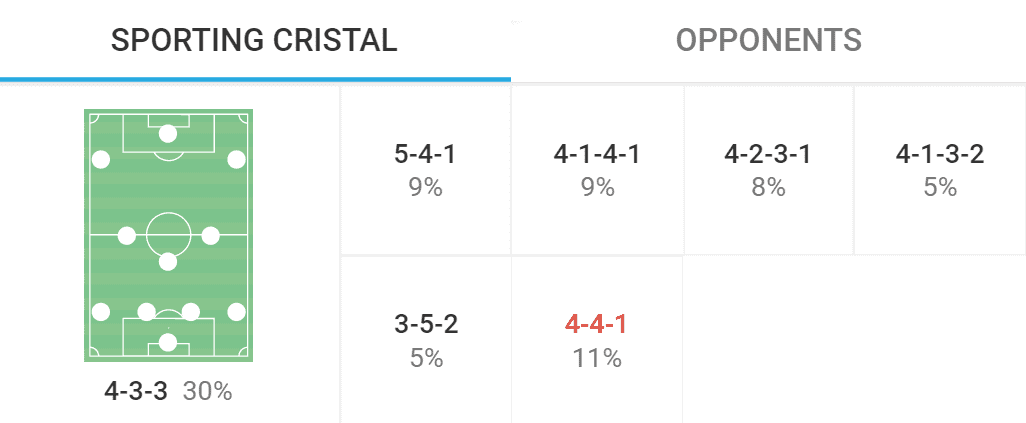
In the 4-3-3, especially in possession, there is a clear system where each position has its own function to the side. The wingers work in relation with the fullbacks to provide dynamic width and support in earlier phases of possession. The central midfielders also play an important role in maintaining balance and organisation. To outline Cristal’s structure, we will explore these two dynamics separately.
Stretching the midfield
The midfield trio plays a vital role in the side’s organisation. This organisation is an expansive one, looking to stretch the defensive organisation as much as possible. The 4-3-3 expands with the backline spreading across laterally, as identified in the image below. The fullbacks’ positioning is not necessarily high, still looking to provide initial support in construction.
The single pivot supports ahead of the backline, as highlighted below. With the two central midfielders staying distant, there is much more space to be explored in the midfield. The single pivot’s role is crucial, as he must know when to provide support and when to identify and clear up vertical passing lanes further up the pitch.
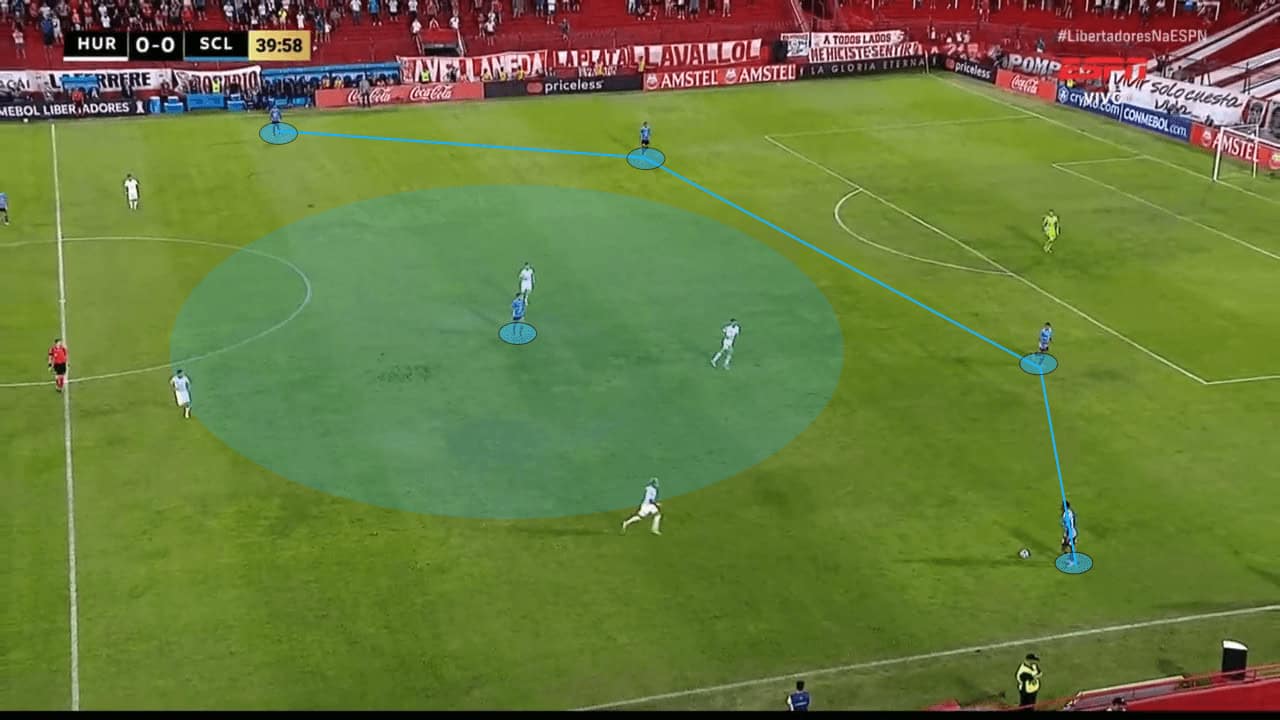
Ideally, the midfielders remain fairly distant from each other in search of passing lanes. This behaviour can be identified below, as the defensive midfielder brings the ball out of the back. With the central midfielders creating passing options as they are, the defensive organisation responds by remaining narrow, looking to eliminate these. Consequently, the wide players find themselves with great space.
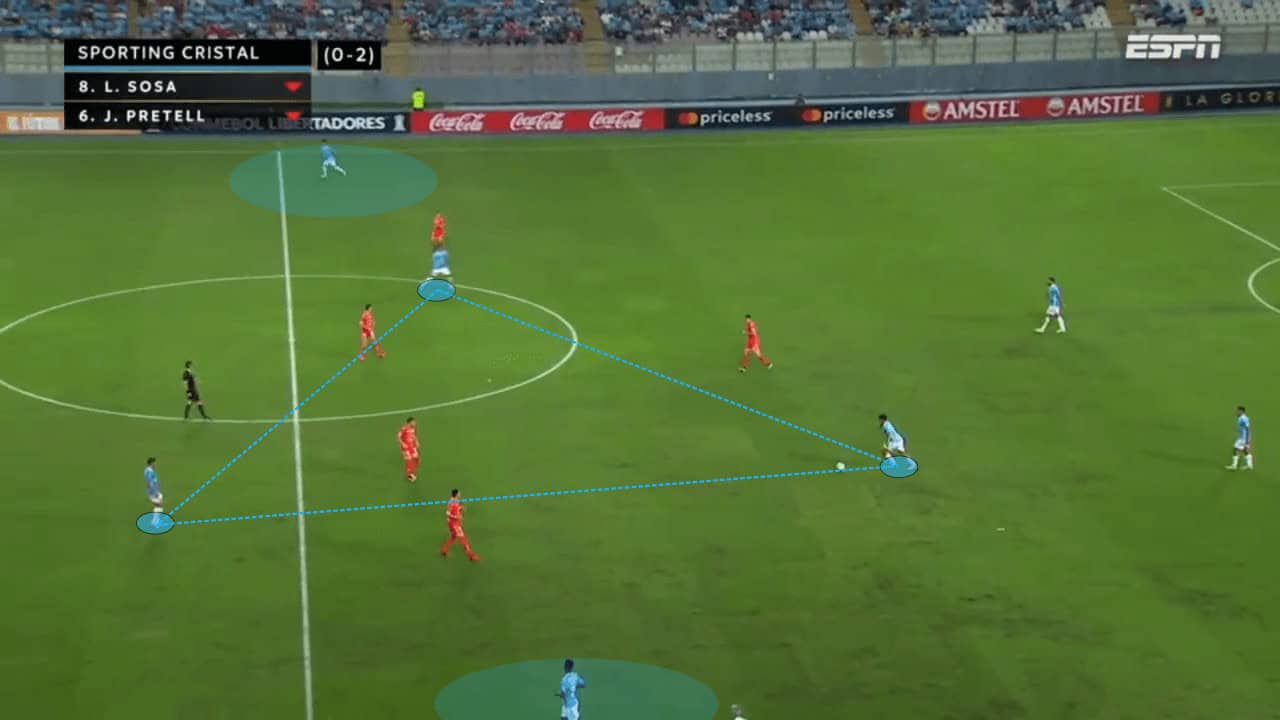
If construction develops in the wide areas, and the wingers drop deeper to provide support, the midfielders offset this by moving up the pitch and providing depth. By doing so, they tend to offer more vertical passing options as well.
This pattern can be identified in the example below, as the right winger drops deep to provide support to the defensive midfielder, right back, and centre-back on that side of the pitch. Consequently, the respective central midfielder remains much higher and provides a vertical passing lane. As he receives it, the right-back makes an overlapping run to receive it.
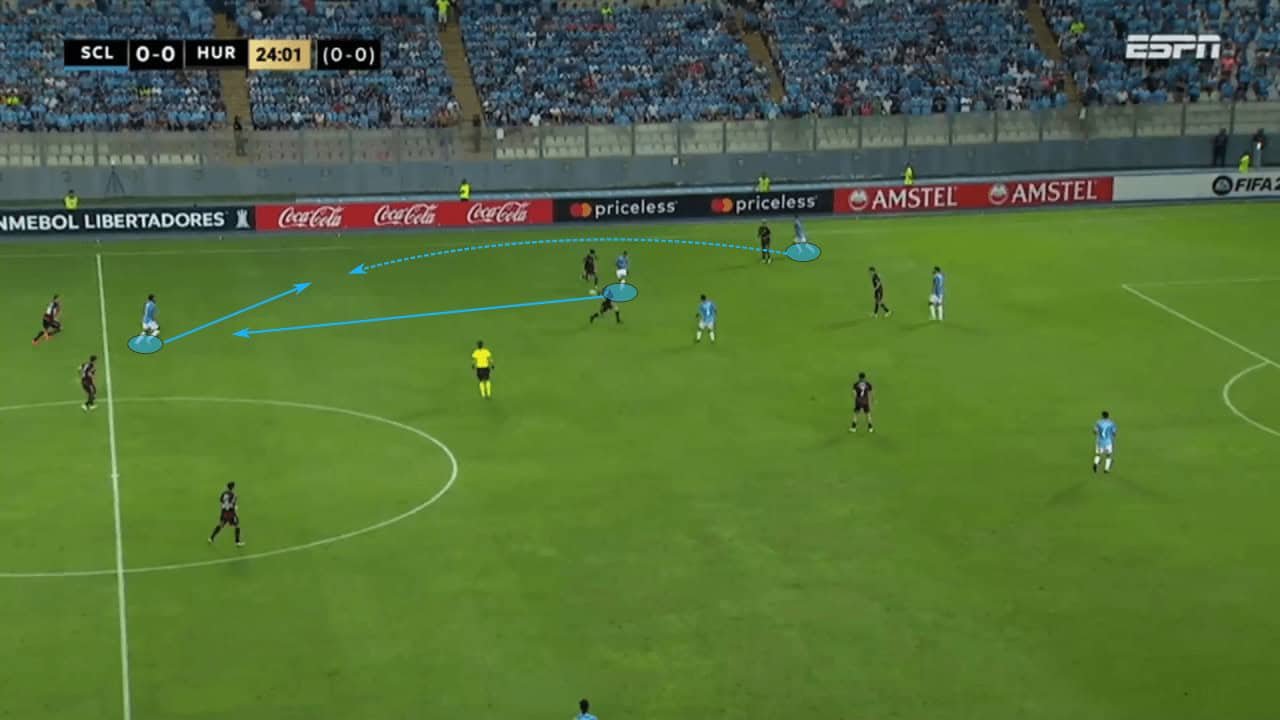
Continuing with the same example, as the right-back drives up the pitch, the other central midfielder pushes up the pitch. The left winger moves inside alongside the centre-forward, and the three can be identified below. The right-back plays it up to the winger who lays it off to the centre-forward. The central midfielder continues his run up the pitch and receives it from the centre-forward for a shot opportunity.
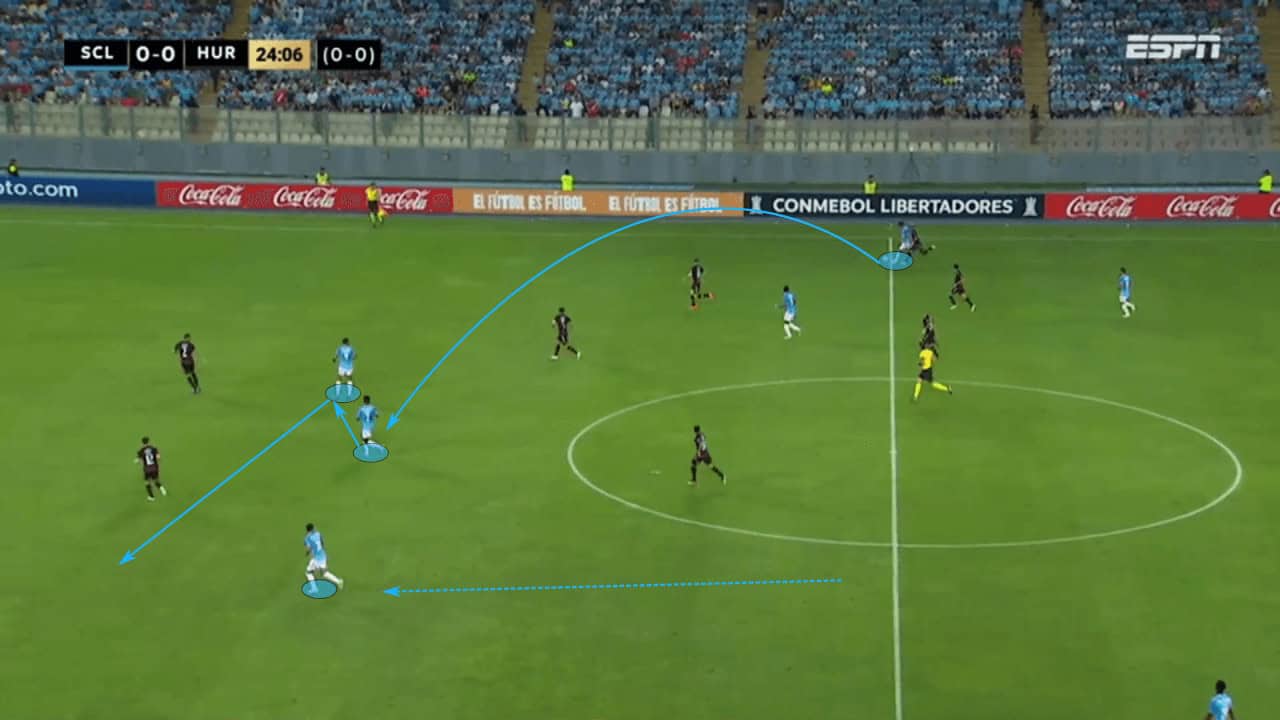
In the example below, possession develops on the left-hand side with the two wide players, the defensive midfielder and the central midfielder. To defend this, the opposition concentrates their defensive organisation on that side of the pitch. Tiago’s men quickly combine away from pressure to the other midfielder in the opposite half-space.
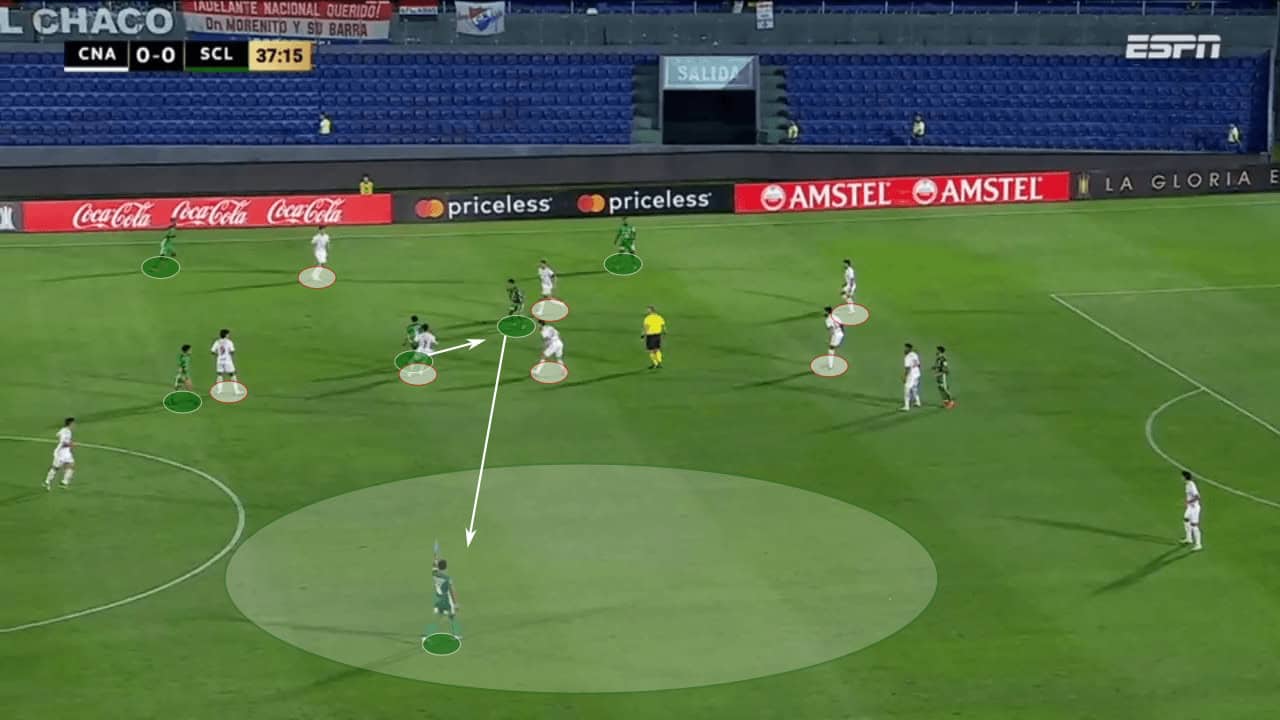
Under Tiago Nunes, Sporting Cristal have undoubtedly been an attacking side, with a clear attacking organisation. However, it is difficult to label them as a possession-based side, with only a 54.33% average. While the idea of constructing a methodical attack and retaining possession in order to develop organisation is there, they can be rather direct with their attacks in some instances.
Los Cerveceros’ pass map can further illustrate this, with a significant number of vertical passes breaking through the pitch. In Sporting’s case, their style of possession is based on the structure and its spontaneous development rather than an idea to be possession-based or vertical.
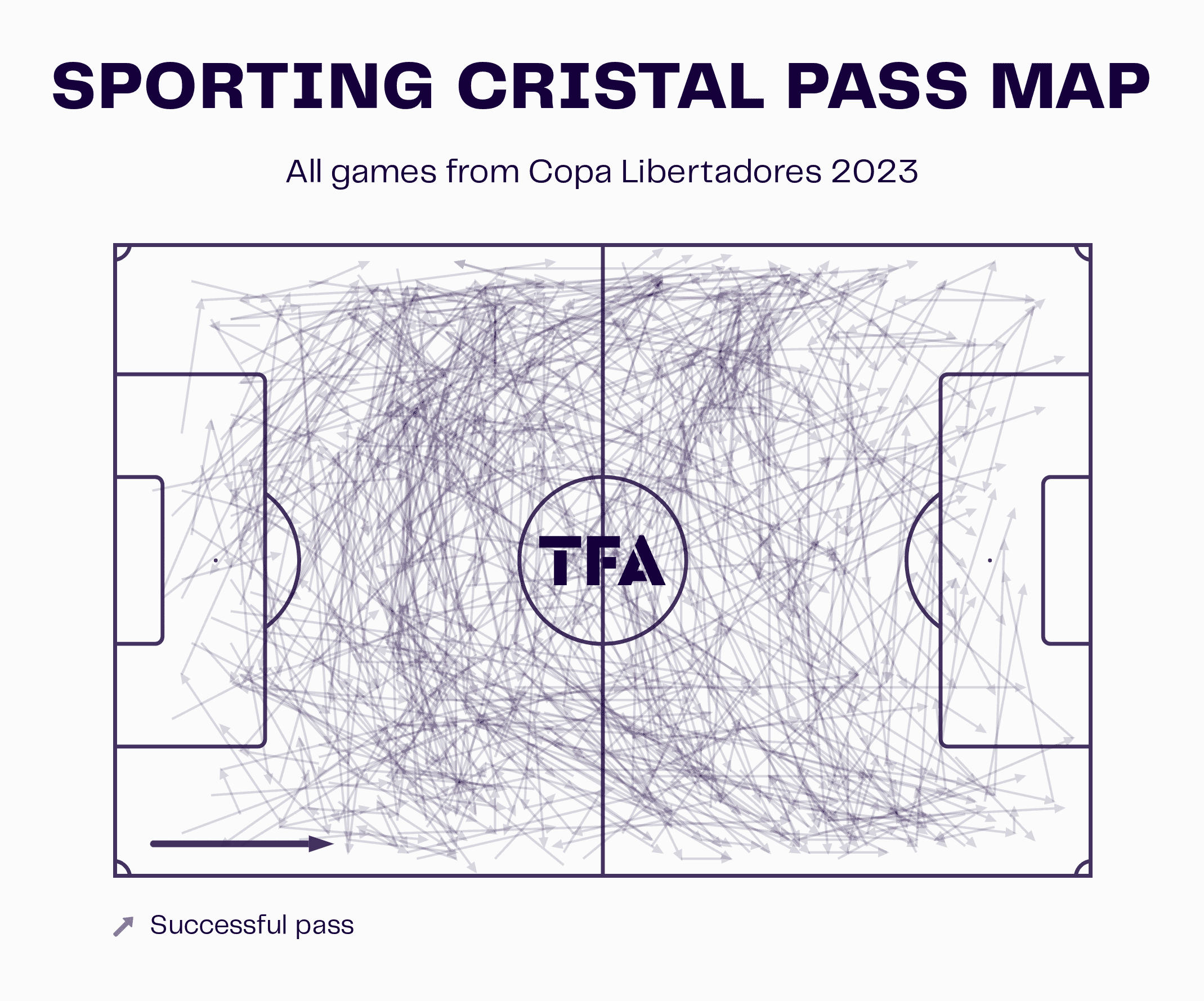
Rational width
Continuing to explore their structure, the role of the wide players is crucial to the development of possession. With an attacking nature, the fullbacks are incentivised to get up the pitch and support the attack. However, this is done rationally, with rational width. Perhaps one of the most significant concepts of Positional Play is the occupation of wide channels.
In settled scenarios, where Sporting Cristal look to progress from the middle third into the final third, the wide players tend to occupy the wide channel simultaneously. This can be identified below, with the fullback and the winger hugging the touchline while the central midfielder and the defensive midfielder provide support.
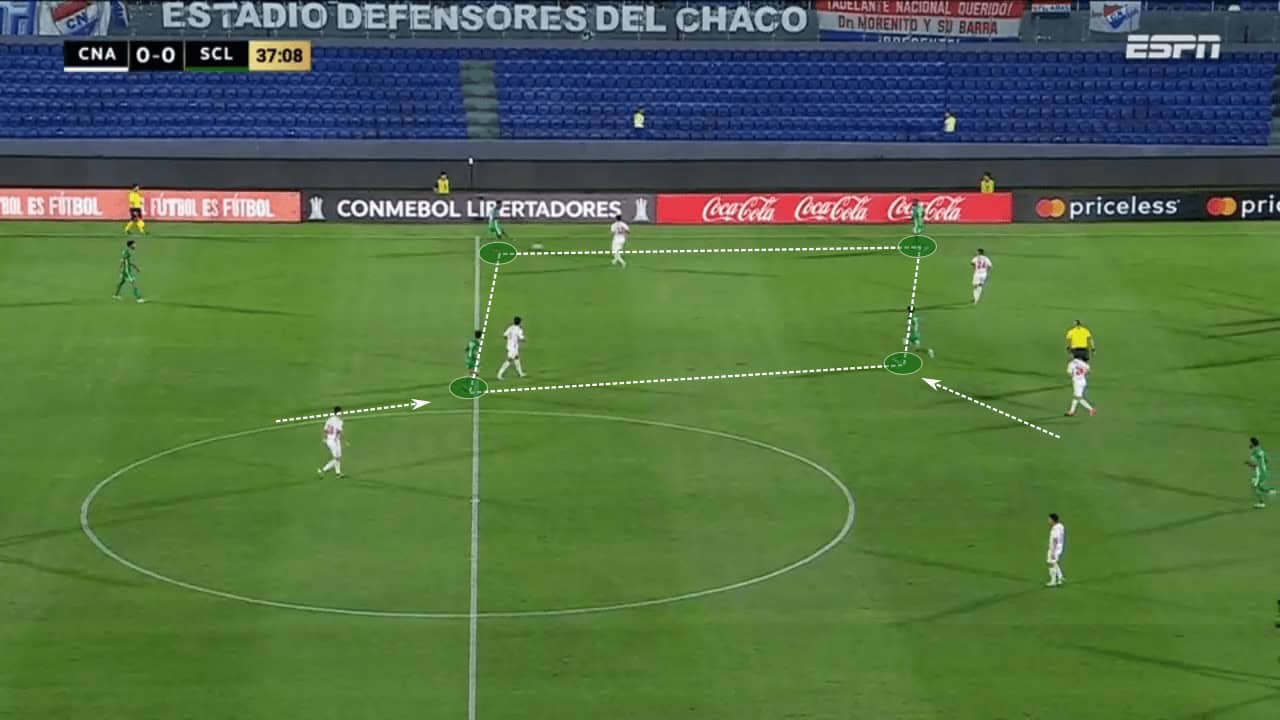
However, in slightly more advanced scenarios, they rarely occupy the wide channel simultaneously. In the example below, the right-back advances with the ball in the half-space while the winger remains all the way wide.
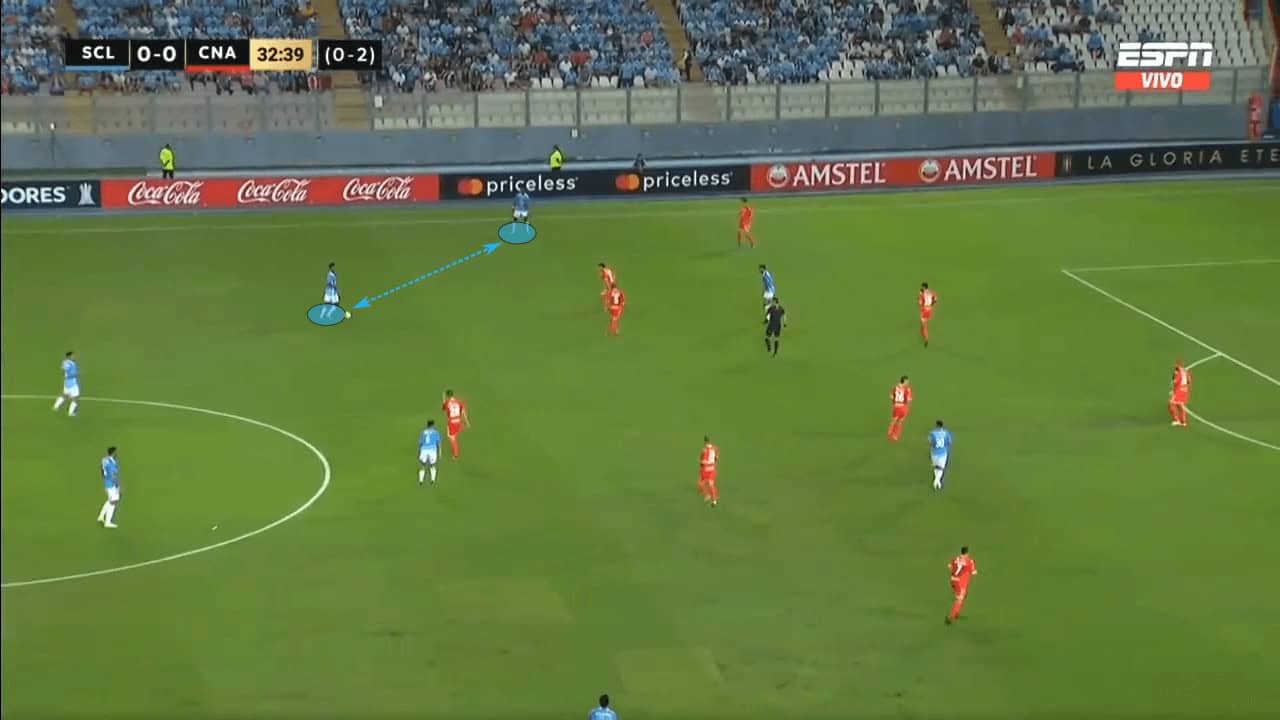
In another instance, we can identify this behaviour much more clearly. The fullbacks provide maximum width in the wide channels while the two wingers float into the half-space. The midfield remains stretched, creating space to be exploited. The defensive midfielder can take advantage of this and find the right winger coming inside.
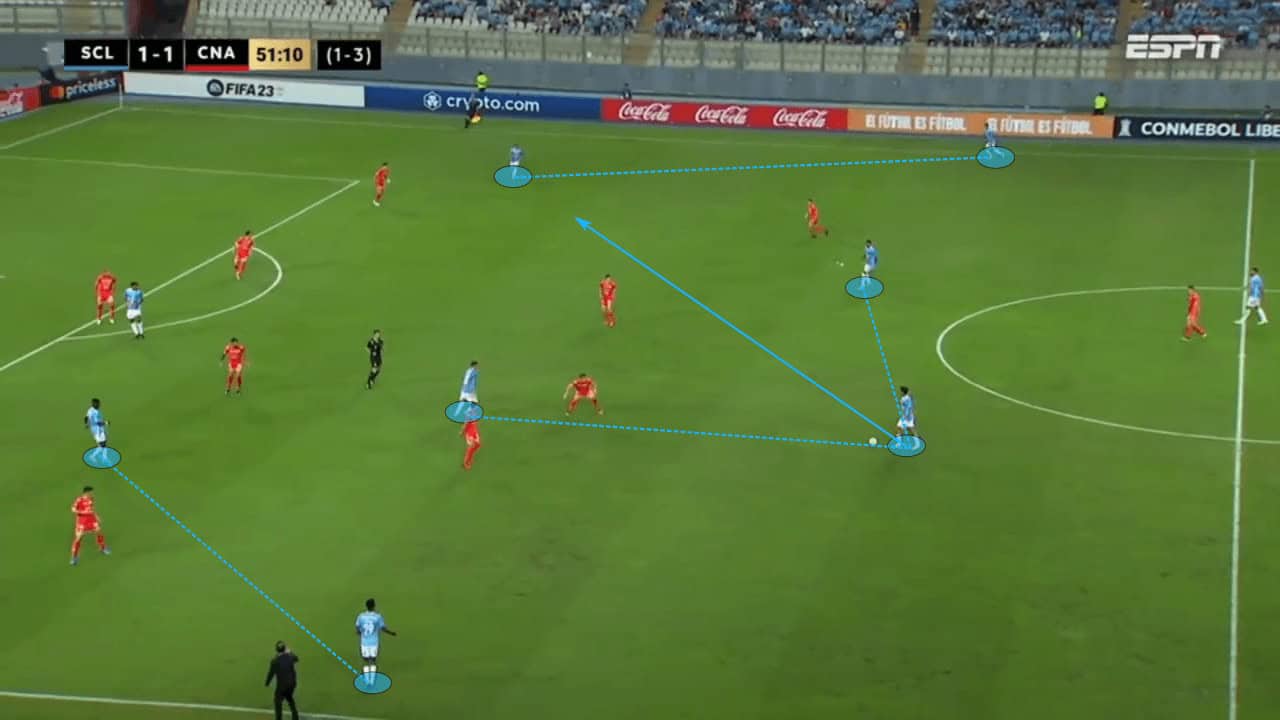
With the fullback maintaining maximum width, especially with late runs, Sporting Cristal can lure the defensive organisation inside and free up the wide channel for the fullback to attack. This can be identified below, as the winger goes inside and drags the opposition’s fullback with him. The opposition’s winger also comes inside to pick up the midfielder, so the wide channel is completely freed up.
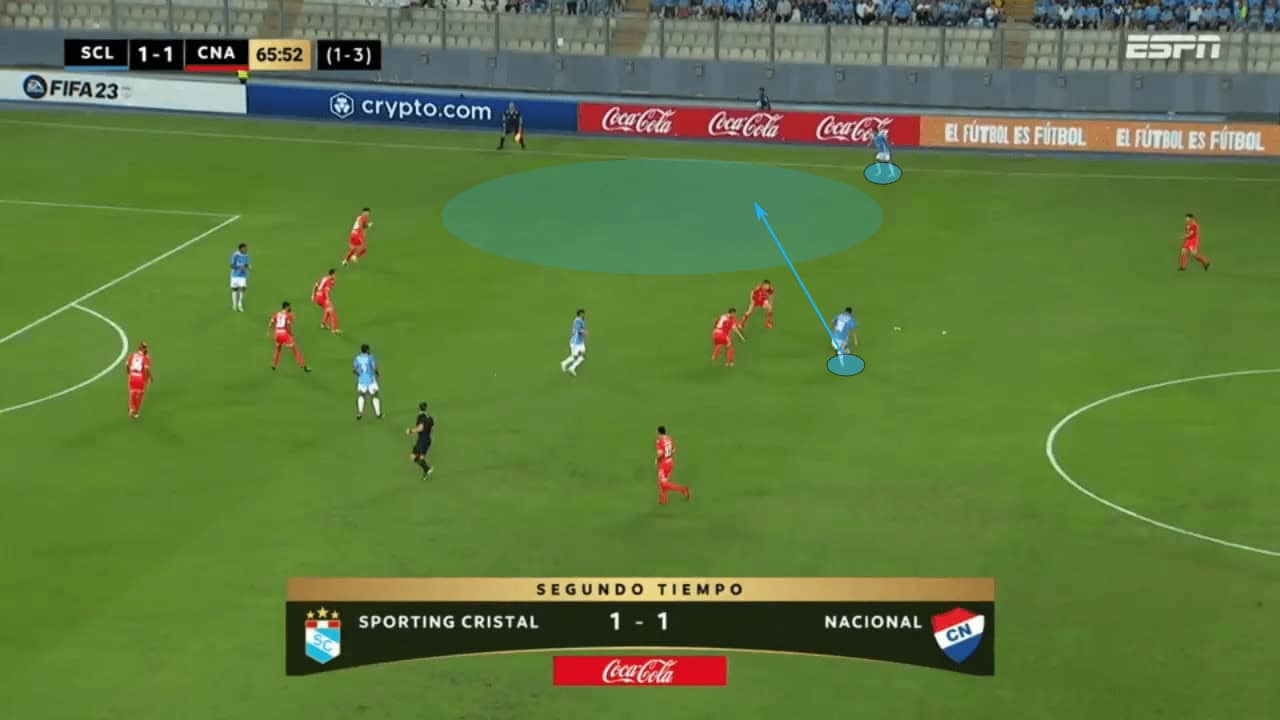
In their progressive pass map, there is a clear pattern in their method of progressing. A significant portion of their progressive passes into the final third tends to be directed into the wide areas, like the two examples above.
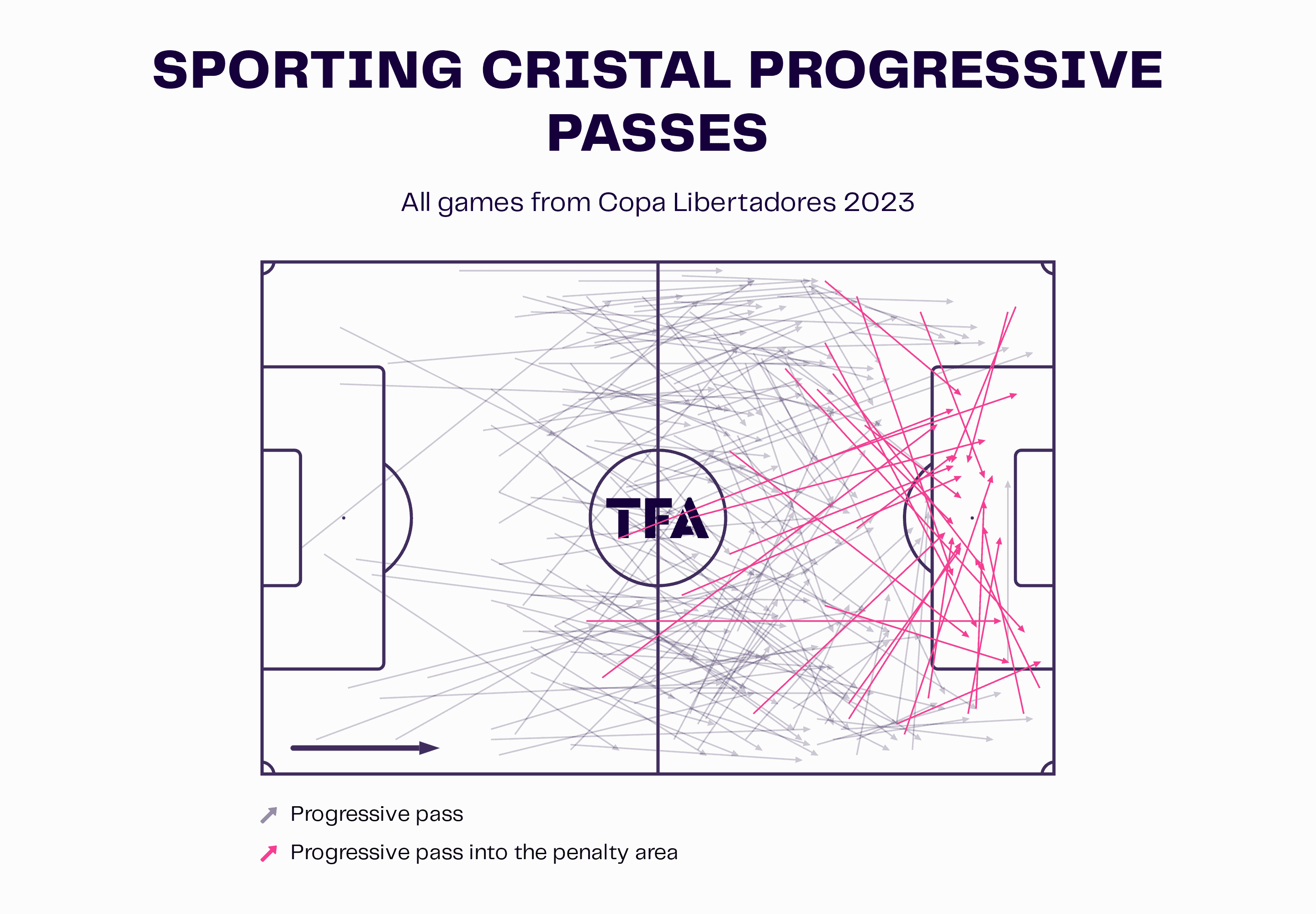
Aggressive defending
Unsurprisingly, Tiago Nunes’ attacking approach to football has an aggressive high press without the ball. Sporting Cristal have averaged a PPDA of 8.35 this year and the second-highest challenge intensity in the league. This mentality begins with an aggressive and space-oriented defensive organisation.
Below, Sporting Cristal look to press Huracán’s build-up. The 4-3-3 turns into a 4-1-2-1-2 of sorts, but the specific shape is not all that important. One of the central midfielders joins the centre-forward to form a partnership and pressure the two centre-backs. The other central midfielder stays in between the opposition’s double pivot. The two wingers stay further back, marking the fullbacks. The defensive midfielder stays between the opposition’s attacking midfielders.
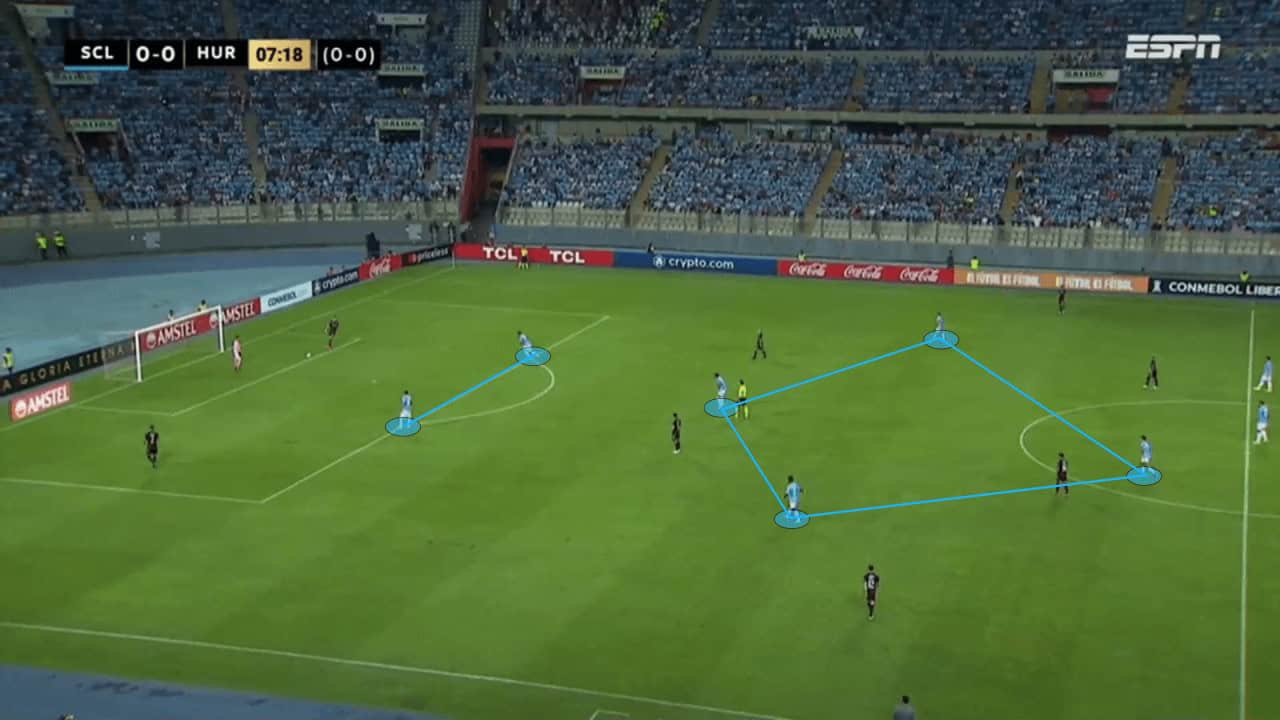
Obviously, the opposition’s organisation will influence the players’ positioning and the consequent shape of the press. Nonetheless, the style of the press is clear. Rather than deploying a man-oriented approach, the press is focused on angles and eliminating passing options.
One of Cristal’s midfielders, Jesús Castillo, is up against two of Huracán’s midfielders. When one of them receives the ball, Jesús Castillo angles his run to eliminate the other and press the ball carrier. Despite being in a 1v2 in that area, the extra man is impossible to reach.
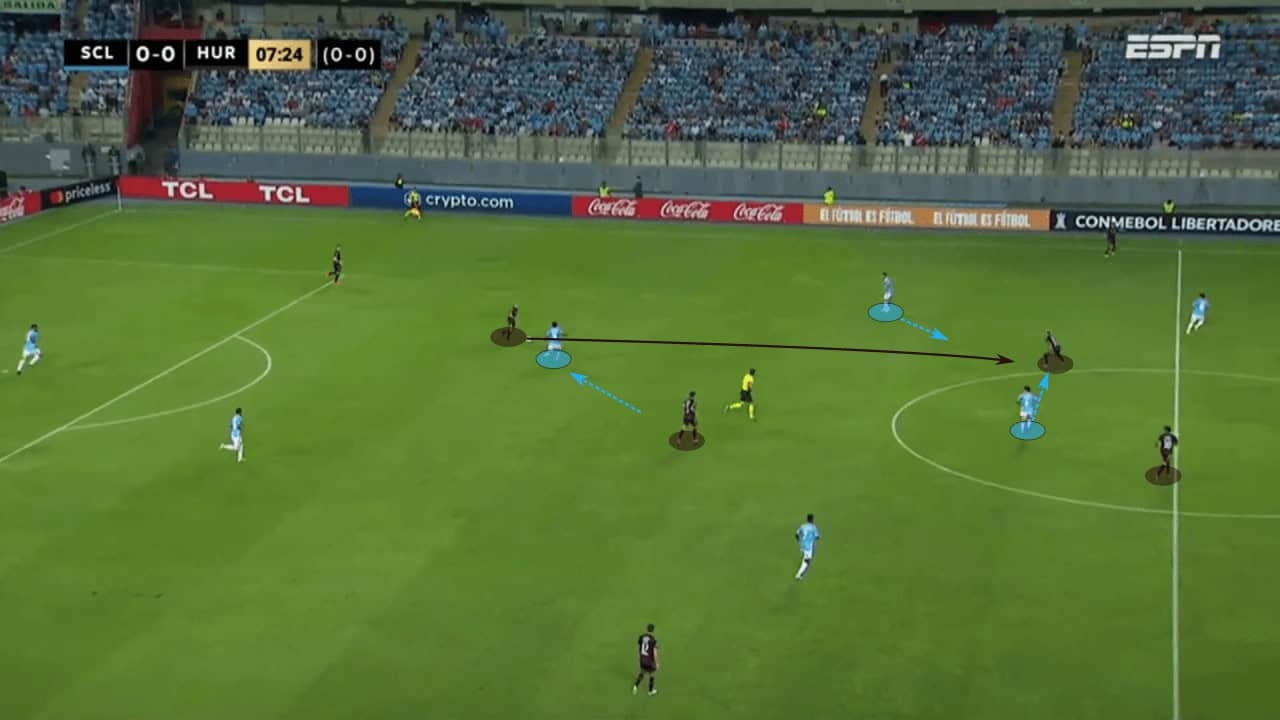
In more of a mid-block, Sporting Cristal’s objective is to eliminate passing options and force the opposition backwards. Below, the three midfielders protect the central lanes while the wingers help eliminate options. The centre-forward leads the press and forces the centre-back to play it back to the goalkeeper.
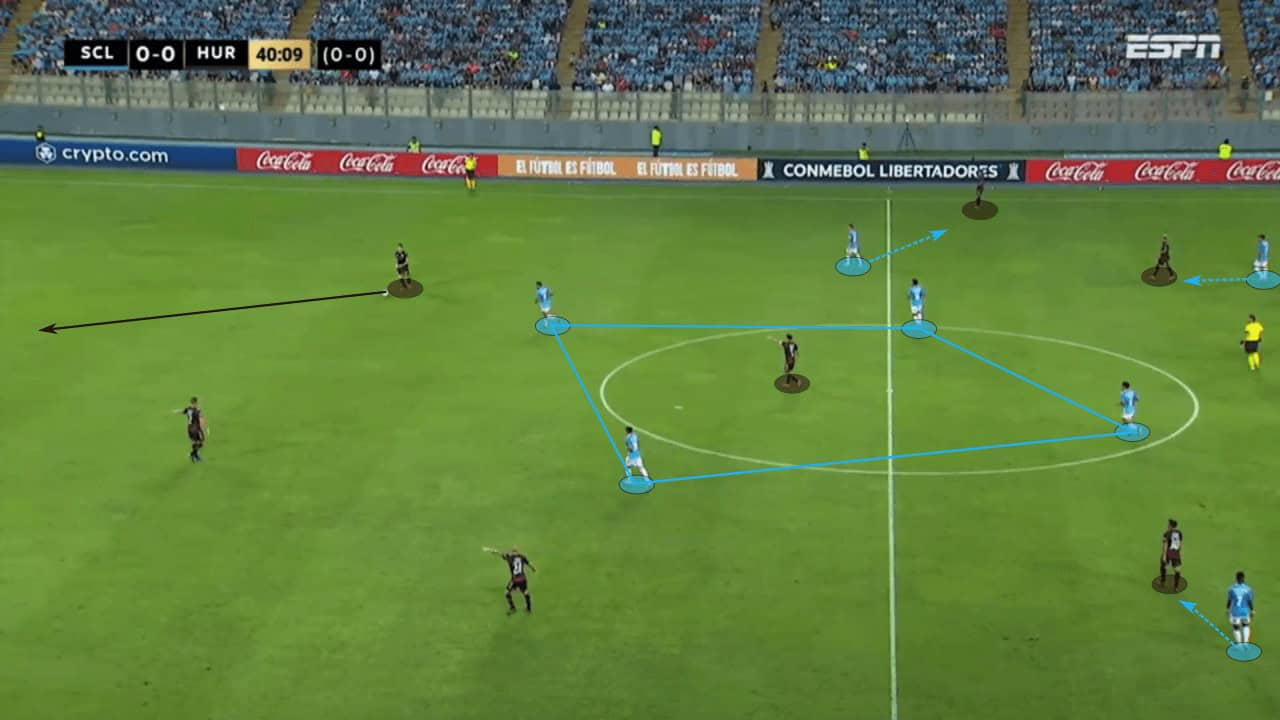
When the opposition goes backwards, Sporting Cristal advance their press in an effort to force the opposition to play it long. In these scenarios, they can be extremely aggressive, as identified below. They risk a 3v3 by pushing up the two midfielders and pressuring Huracán’s three players.
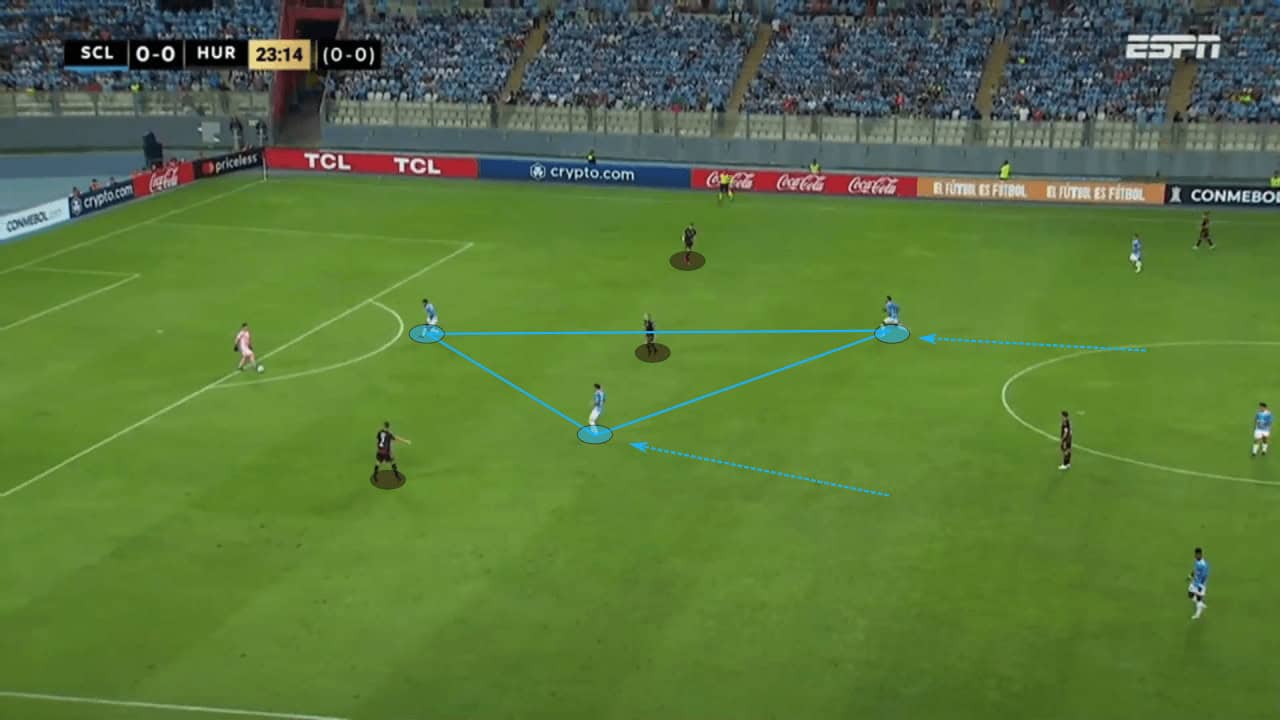
Finally, the 4-1-4-1/4-5-1 can also be identified in deeper blocks. Similarly, there is an effort to remain extremely compact and eliminate passing lanes. From this structure, they can easily jump forward and advance their press. So far, Sporting Cristal’s defensive system has been performing fairly well under Tiago Nunes. Although the system is aggressive, the transition from a higher block to a lower block is extremely smooth and secure.
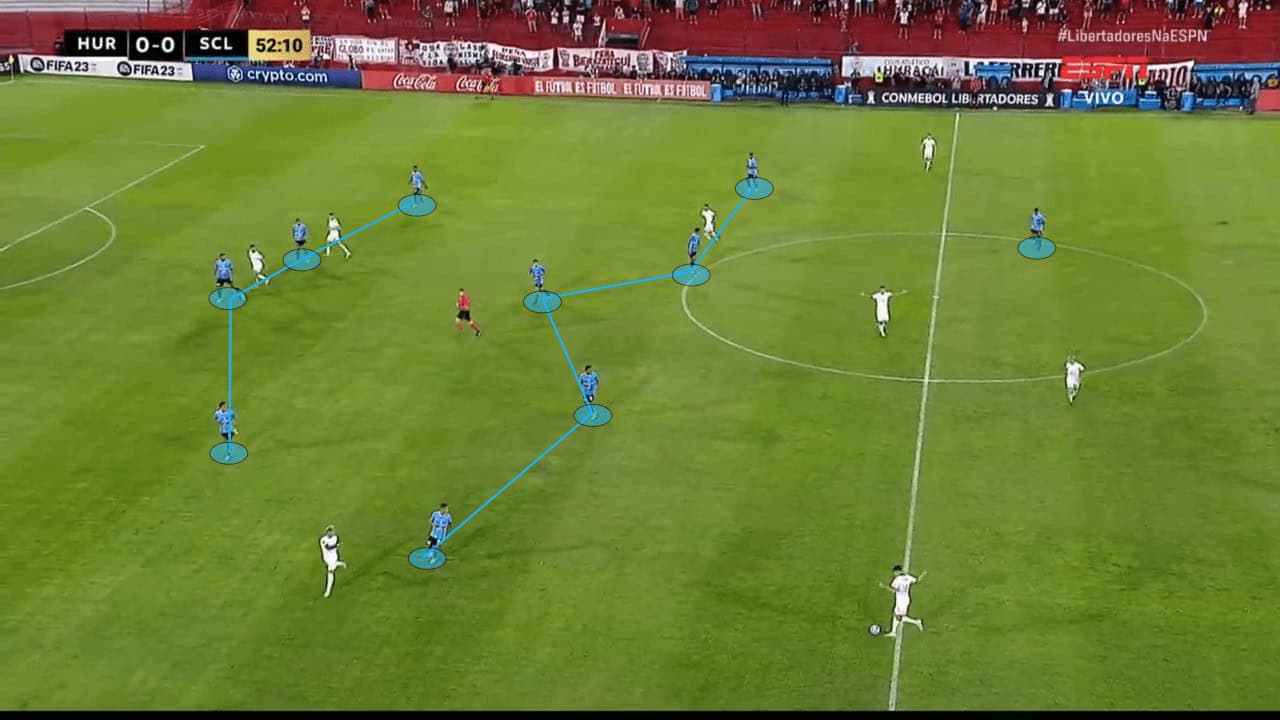
Conclusion
After a promising start to his career, Tiago Nunes has ventured to Peru in an effort to revive his career. Only 10 matches into his tenure with Sporting Cristal, Tiago Nunes is developing an extremely exciting project with the Peruvian team.
While the results have been good, the tactics have been even more exciting. His fluid style of Positional Play certainly agrees with the players, and it has been extremely well coached. The challenge now is finding sustainability and leading Sporting Cristal to success, finally getting his career back on track.





Comments